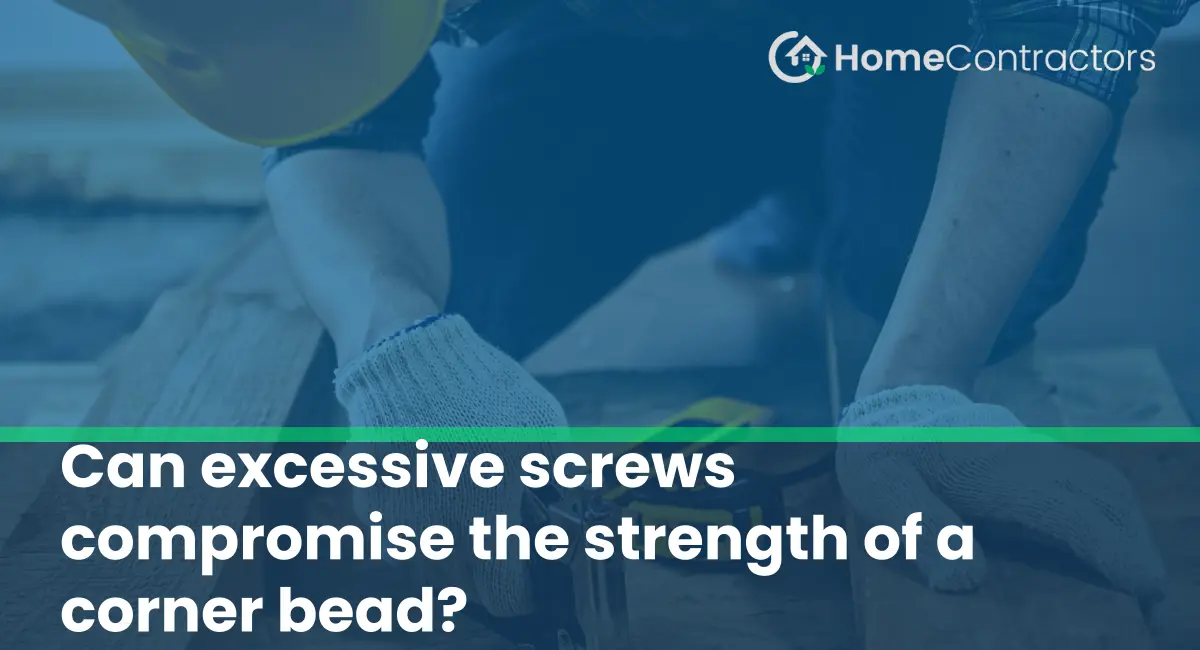Corner beads play a vital role in the construction industry, providing stability and protection to the vulnerable corners of walls during the finishing process. To ensure their durability, corner beads are usually attached to drywall using screws. However, it is essential to strike a balance between the number of screws used and the strength of the corner bead. Excessive screws can potentially compromise the overall strength of a corner bead, leading to various issues that affect the integrity of the wall. In this article, we will delve deeper into the topic and explore the potential consequences of using an excessive number of screws on corner beads.
Understanding the purpose of corner beads:
Before discussing the impact of excessive screws on corner beads, it is essential to understand the purpose and functionality of these crucial components in construction.
Corner beads are metal or plastic strips placed on the edges of a wall or corner joint. They serve multiple purposes, such as:
- Protection: Corner beads protect the delicate edges of drywall from damage caused by impacts, collisions, or abrasion.
- Reinforcement: They provide added strength and stability to the corners, ensuring they remain intact during the construction process and everyday use.
- Aesthetics: Corner beads create a neat and professional finish, preventing visible cracks or irregularities that may occur at the corners.
The importance of using screws for attaching corner beads:
Screws are the most common method used for attaching corner beads to drywall due to their reliability and strength. When properly installed, screws hold the corner bead securely in place, reinforcing its strength and preventing it from shifting or flexing over time.
The potential consequences of excessive screws:
While screws are an integral part of attaching corner beads, using an excessive number of screws can introduce several problems. Let’s explore these potential consequences:
- Structural Weakness: Excessive screws can weaken the overall structure of the corner bead, compromising its ability to provide stability and reinforcement to the corners. If the number of screws exceeds the manufacturer’s recommendations, the corner bead may become less rigid, leading to increased vulnerability and potential damage.
- Surface Imperfections: Over-screwing corner beads can create an uneven surface. The excess screws can cause the drywall to dimple, resulting in visible indentations or bulges that may require additional repair work before finishing.
- Cracking and Fractures: Too many screws can cause stress points along the length of the corner bead. Over time, this stress can lead to cracks or fractures in the corner bead, reducing its ability to protect the wall from impacts and compromising its overall durability.
Recommendations for proper screw placement:
To ensure the strength and integrity of corner beads, it is crucial to follow proper screw placement guidelines. Here are some recommendations:
- Manufacturer Guidelines: Always refer to the manufacturer’s recommendations for the appropriate number and placement of screws on your specific corner bead model.
- Consistency: Maintain consistency in the number and spacing between screws along the entire length of the corner bead. This even distribution of screws ensures uniform strength and stability throughout the bead.
- Avoid Over-Screwing: Do not exceed the recommended number of screws. By avoiding over-screwing, you reduce the risk of compromising the corner bead’s strength and prevent issues such as surface imperfections, cracking, or fractures.
While screws are an essential element in attaching corner beads, excessive screws can compromise the strength and integrity of these protective components. Striking a balance between the number of screws used and the overall strength of the corner bead is crucial to maintain their effectiveness. By following manufacturer guidelines and avoiding over-screwing, you can ensure that corner beads perform their intended function of providing structural stability, protection, and aesthetic appeal to corners in a construction project.
